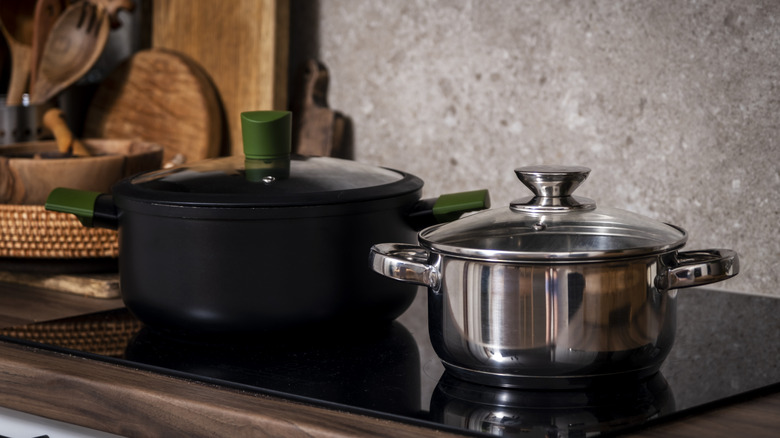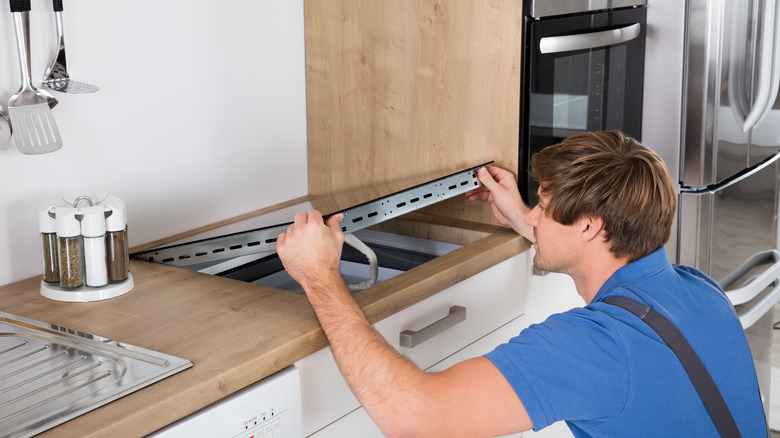What It Really Means If Your Induction Stovetop Shakes (And How To Fix It)
Induction stovetops seem magical. They use electromagnetic energy to heat up pots and pans, without warming up the actual stove. To add to the mystery and magic, they can make pots and pans shake in the process. But while cookware vibrating is normal, the stovetop itself should not be shaking. If that happens, you should check that the stovetop is properly attached, fastened, and sealed.
Since cooking with induction uses electromagnetism, the pots and pans need to be ferromagnetic. Without going into the complicated but scientific details, this basically means anything made of cast iron, enameled steel, and some specific stainless steel can work with induction. Some manufacturers have even added layers to the bottom of their regular cookware so they would work on an induction stove. When these pans heat up, it creates that shaking and vibrating effect that you often see. However, you should only notice the pots or pans shaking — not the stovetop.
There are also certain sounds that might come from your induction stovetop that could easily be mistaken for shaking. From a pulsating magnetic field to the humming of the built-in cooling system and fan, there is a lot going on inside the stovetop. However, these are just noises and small vibrations. If you've determined that your stovetop is indeed shaking, it's time to examine how it's installed and secured to the countertop.
If your stovetop is shaking, it's probably loose and ill-fitted
If you believe you have an issue with your induction stovetop, you should have it fixed as soon as possible. A vibrating stovetop typically means that the glass layer is not tightly attached. This can happen even with the most reliable induction stoves. For example, if the cooktop is smaller than the opening in the countertop, it could wiggle and move out of place. To create a snug and secure fit, some stovetops are secured with brackets and clips that hold the appliance in place. The issue might also come from a damaged or missing sealing strip that connects the glass to the countertop, which should be provided with the cooktop or sold by the manufacturer. Standard caulking should not be used.
If you have noticed any of these problems, it's best to contact a professional as it is dangerous to work with electricity. In addition, induction stovetops are not inexpensive and trying to DIY a solution could end up costing you more down the line if you break it. If your induction cooktop is too damaged to be fixed, a professional can help you replace it, too. Hiring a good electrician will guarantee that the job is done safely and efficiently.

